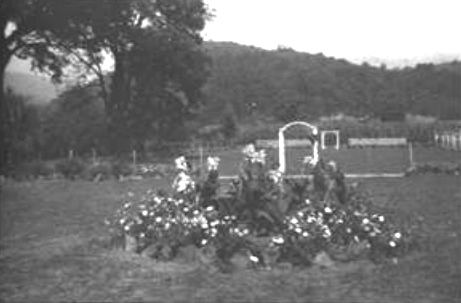|
D3
-- Photo contributed by Don Dunkle |
|
|
When I was in my early teens, I spent my summers working for Granddad -- sickling the creekbank, mowing the grass, and tending the marigolds, petunias, roses, gladioli, and myriad other flowers that graced his lawns. He was unusually knowledgeable about ornamental plants and their cultivation, and it was clear that he loved them. During lunch breaks, he often showed me his collection of rifles, shotguns, fishing rods, and lures, and told stories of his adventures as an angler and hunter. But he also showed me his picture of the cathedral of Rheims, which he had visited during the war. Running a finger over the glass, he described the fabulous colors in the church windows, the delicate tracery of its impossibly high ceilings, and the spooky silence inside -- "the quietest place I've ever been." Those summers with my grandfather had a profound effect on me. They taught me respect for hard work, of course, and an appreciation of fine workmanship. But most important, they showed me that a real man is more than just a hunter and fisher and provider (as most men on Pine Creek were). He is also an artist -- a thinking creature with a spiritual dimension who loves and practices what is best in everything. Granddad never mentioned it, but my dad told me years after his death that his father had studied horticulture at Syracuse University, where he also played on the baseball team. "Dad was a very good ballplayer," says Uncle Don, who notes that Granddad also took courses at Valparaiso University, near Chicago. Thanks in part to the Great War, I suppose, Granddad never finished a degree. But his curiosity and respect for learning propelled his children and grandchildren into worlds of intellect that most people never explore. (I am mystified by the background in this photo. The trellis I recognize, but what are those two light-colored rectangles behind it and the white square with the black center between them? Furthermore, why are there buildings on the side of the mountain beyond? They seem to be sitting too far north to be Mary Williams's tavern, but perhaps I'm mistaken.) -- Terry
|
